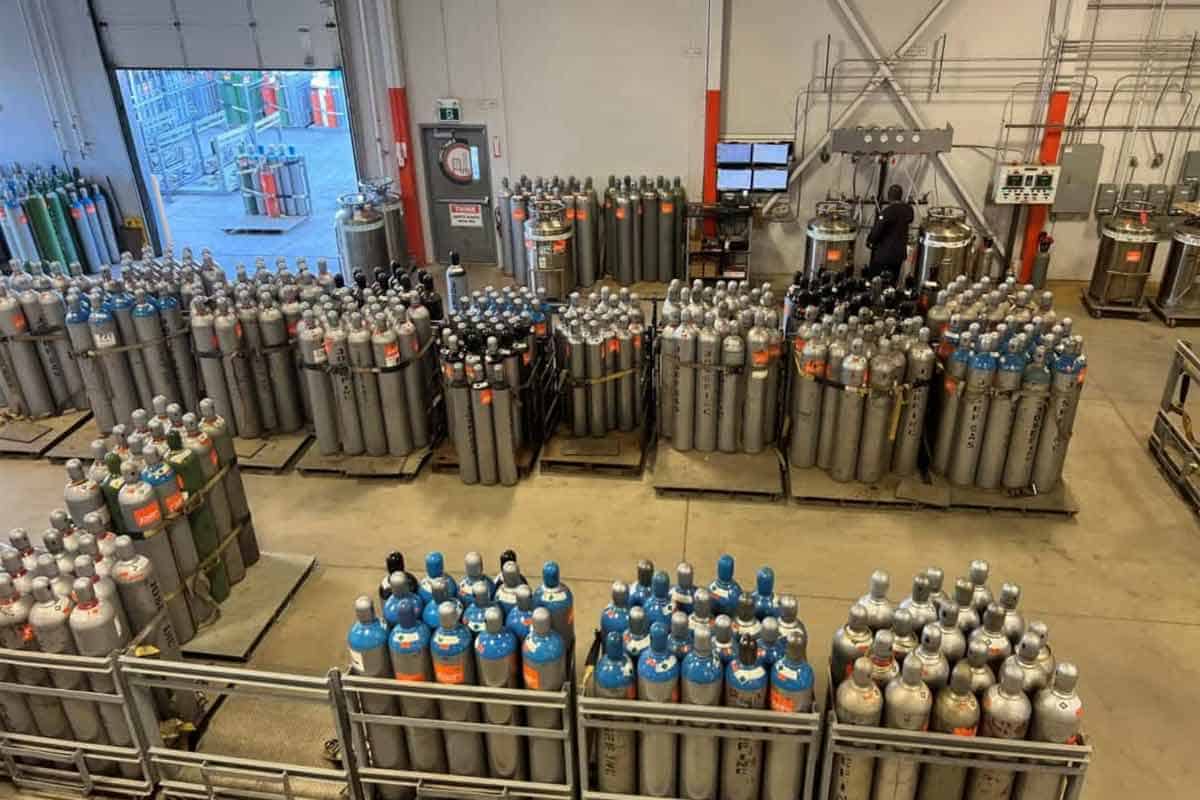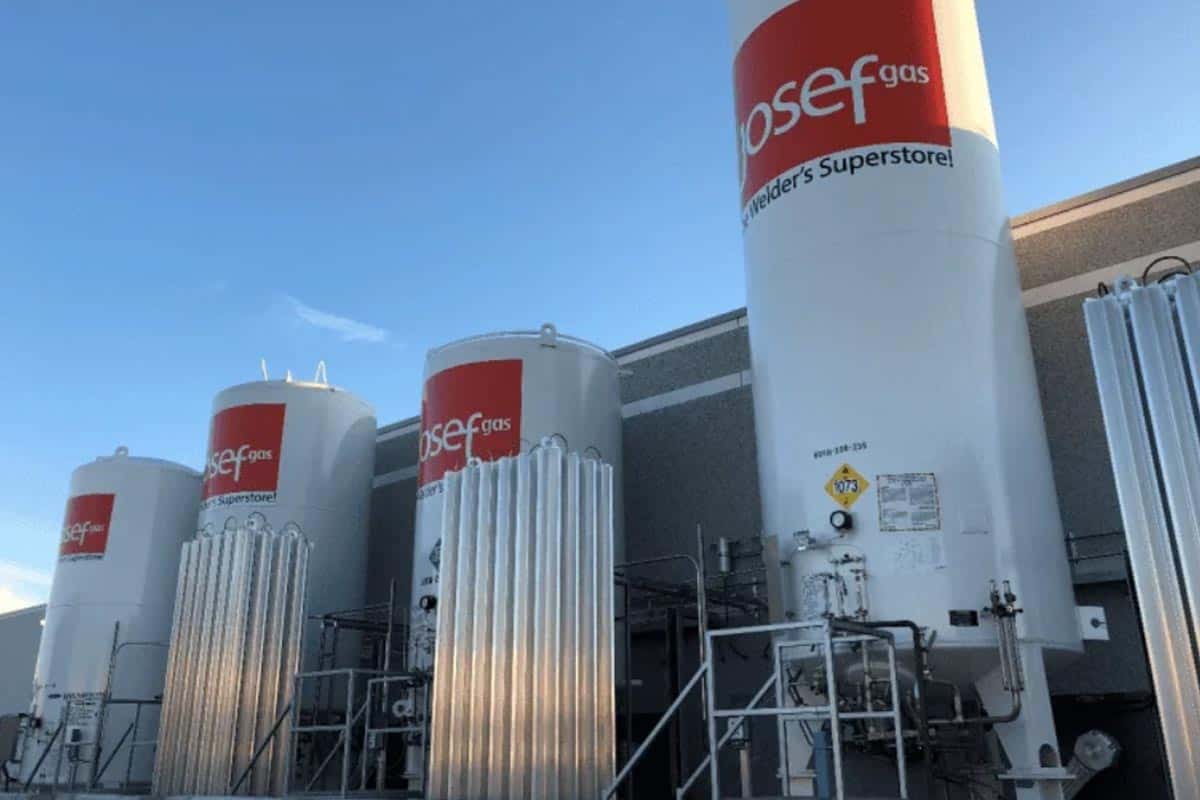Nitrogen’s Role in Keeping Industrial Food Fresh: Taste and Texture Protection
November 12, 2025 4:19 pm
The food industry faces a constant challenge: delivering products to consumers that taste as good and feel as fresh as the moment they were made. Maintaining the sensory quality—the precise flavour profile and characteristic texture—over a product’s shelf life is critical for consumer satisfaction and brand reputation. The primary culprits of flavour and texture degradation are oxygen, moisture, and microbial growth. Oxygen, in particular, initiates oxidation, a chemical reaction that leads to rancidity in fats and oils, discolouration, and the breakdown of essential nutrients, resulting in off-flavours and a stale mouthfeel. Moisture migration can cause crispy foods to become soggy or soft foods to dry out.
To combat these pervasive issues, modern food processing relies heavily on controlled atmosphere technology, with nitrogen gas playing a central and often essential role. As an inert, odourless, and colourless gas, nitrogen is safe for direct contact with food and is highly effective at displacing harmful oxygen and controlling the internal environment of packaging and storage systems. Its application isn’t just a measure of extending shelf life; it’s a strategic process for preserving the inherent quality that defines a food product, ensuring that the consumer experience is consistent and enjoyable from the production line to the dinner table. This piece outlines the various ways nitrogen gas is employed to lock in the desired taste and texture across the industrial food sector.
How Nitrogen Preserves Taste and Texture in Industrial Food Processing
The fundamental mechanism by which nitrogen preserves food is through Modified Atmosphere Packaging (MAP) and other inerting techniques. Nitrogen is used to flush out oxygen from the packaging headspace or processing equipment. Removing oxygen drastically slows the rate of aerobic spoilage—reactions caused by oxygen—thereby extending the product’s shelf life without requiring heavy chemical preservatives. This simple act of displacement has profound effects on quality.
- Preventing Lipid Oxidation: Fats and oils are highly susceptible to oxidation, which causes rancidity—a significant source of ‘off-tastes’ that are immediately noticeable and highly unpleasant to the consumer. In high-fat products like crisps, nuts, and processed meats, injecting or back-flushing the packaging with nitrogen removes the oxygen, stopping this reaction before it begins. This ensures the clean, intended flavour profile remains intact for the entire shelf life.
- Maintaining Colour Stability: Oxygen can react with pigments in food, leading to undesirable colour changes. In meats and certain produce, nitrogen’s inerting effect helps to maintain the natural, appealing colours that signal freshness to the consumer, such as the vibrant red in raw beef or the green in certain vegetables.
- Inhibiting Aerobic Microbial Growth: Many common spoilage organisms, such as mould and certain bacteria, require oxygen to thrive. By significantly reducing the oxygen concentration within the packaging to very low levels (often less than 1%), nitrogen creates an environment that slows the growth of these microbes, reducing the risk of spoilage and potential health issues.
Safeguarding Texture Through Moisture Control
While oxygen exclusion is nitrogen’s most well-known function, its role in texture preservation via moisture control and pressure stabilization is equally important, particularly in snacks and beverages.
- Protecting Crispness: For dry, crunchy foods like crackers, cereals, and snack foods, maintaining a low moisture content is key to preserving their desired brittle texture. Excess moisture, whether from the product itself or the surrounding air, causes them to go soggy. Nitrogen gas, which is typically very dry, is used during the packaging process to displace humid air. This helps to lock in the original moisture content of the food and prevent external moisture ingress.
- Preventing Collapse in Baked Goods: In delicate items, such as pre-packaged cakes or pastries, a drop in atmospheric pressure can cause the soft, airy structure to compress or collapse. By using nitrogen to pressurize the packaging slightly—a technique often called ‘cushioning’—the integrity of the texture is preserved against external bumps or changes in altitude during shipping. The product arrives at the store with the intended springy, soft texture.
- Controlling Carbonation in Drinks: In the beverage industry, food-grade gas nitrogen is often used alongside carbon dioxide to manage the fizz and mouthfeel of drinks. Nitrogen has a lower solubility in liquids than CO2, creating smaller bubbles and a smoother, creamier texture, which is highly desirable in certain beers and non-alcoholic beverages. It also helps stabilize the can or bottle against internal pressure changes.
Essential Applications in Processing and Storage

The benefits of nitrogen aren’t limited to the final packaging stage; they start much earlier, throughout the processing, blending, and storage phases.
- Blanketing and Purging: During industrial mixing, blending, or storage of liquid and semi-liquid food ingredients (like oils, sauces, and flavourings), the headspace of the storage tanks is often filled, or blanketed, with nitrogen. This continuous layer of inert gas prevents air from contacting the product surface, which is crucial for high-volume storage of perishable ingredients. Purging involves flushing a container with nitrogen to remove all traces of air and moisture before the product is introduced.
- Cryogenic Freezing: Ultra-rapid freezing is a critical step for preserving the texture of delicate foods, such as berries, shrimp, and prepared meals. Cryogenic freezing using liquid nitrogen achieves extremely low temperatures almost instantly. This rapid process creates smaller ice crystals within the food cells. Smaller ice crystals minimise damage to the cellular structure, which is the primary cause of the mushy, watery texture and flavour loss often associated with slow freezing.
- Pneumatic Conveying: For moving dry ingredients like flour, spices, or coffee beans through a processing plant, pneumatic conveying systems are common. Using compressed nitrogen instead of regular compressed air can prevent dust explosions and simultaneously protect the quality of the ingredients by avoiding exposure to oxygen and moisture during transit. For facilities requiring a reliable supply of gas for these processes, access to consistent, high-quality welding gas in Toronto, GTA is often handled by the same industrial gas suppliers who provide food-grade nitrogen.
Quality Assurance and Industrial Gas Partnership
The success of nitrogen-based preservation relies entirely on the purity and reliability of the gas supply. To achieve the required parts-per-million (PPM) oxygen levels in food packaging, the nitrogen must be certified as a food-grade gas, meeting stringent regulatory standards for safety and purity. Industrial food processors need a partner who understands these stringent requirements and can provide both the product and the necessary supporting infrastructure.
The industrial gas sector is highly integrated, and suppliers who excel in providing specialized products, such as welding equipment in Toronto, often possess the technical expertise and logistics capabilities to manage the demanding supply chains for food-grade gas as well. This versatility ensures businesses can access all their industrial gas needs from a single, trusted source.
Nitrogen is far more than an inert filler in the world of industrial food processing; it is an indispensable tool that chemically and physically safeguards the consumer’s experience. By effectively managing the environment within packaging and processing systems, this simple food-grade gas prevents the chemical reactions and microbial activities that destroy flavour and ruin texture. Its application ensures that crispy foods stay crisp, soft foods remain tender, and the intended taste profile is maintained from the factory gate to the consumer’s plate.
For those expanding their operations or needing diverse industrial supplies, Josef Gases provides not only the high-purity gases for food preservation but also supplies like welding gas in Toronto, GTA, reflecting our broad expertise and capability. For immediate assistance with any industrial gas supply needs, including welding equipment in Toronto, or to schedule a service, please contact Josef Gases at (416) 658-1212 right now.

![For a dependable partnership that delivers both high-quality food-grade gas in Toronto and flawless propane delivery, there is only one number to call. Contact Josef Gases at (416) 658-1212 now to schedule your consultation.]](https://josefgases.com/wp-content/uploads/2025/11/CTA-image-1.jpg)
